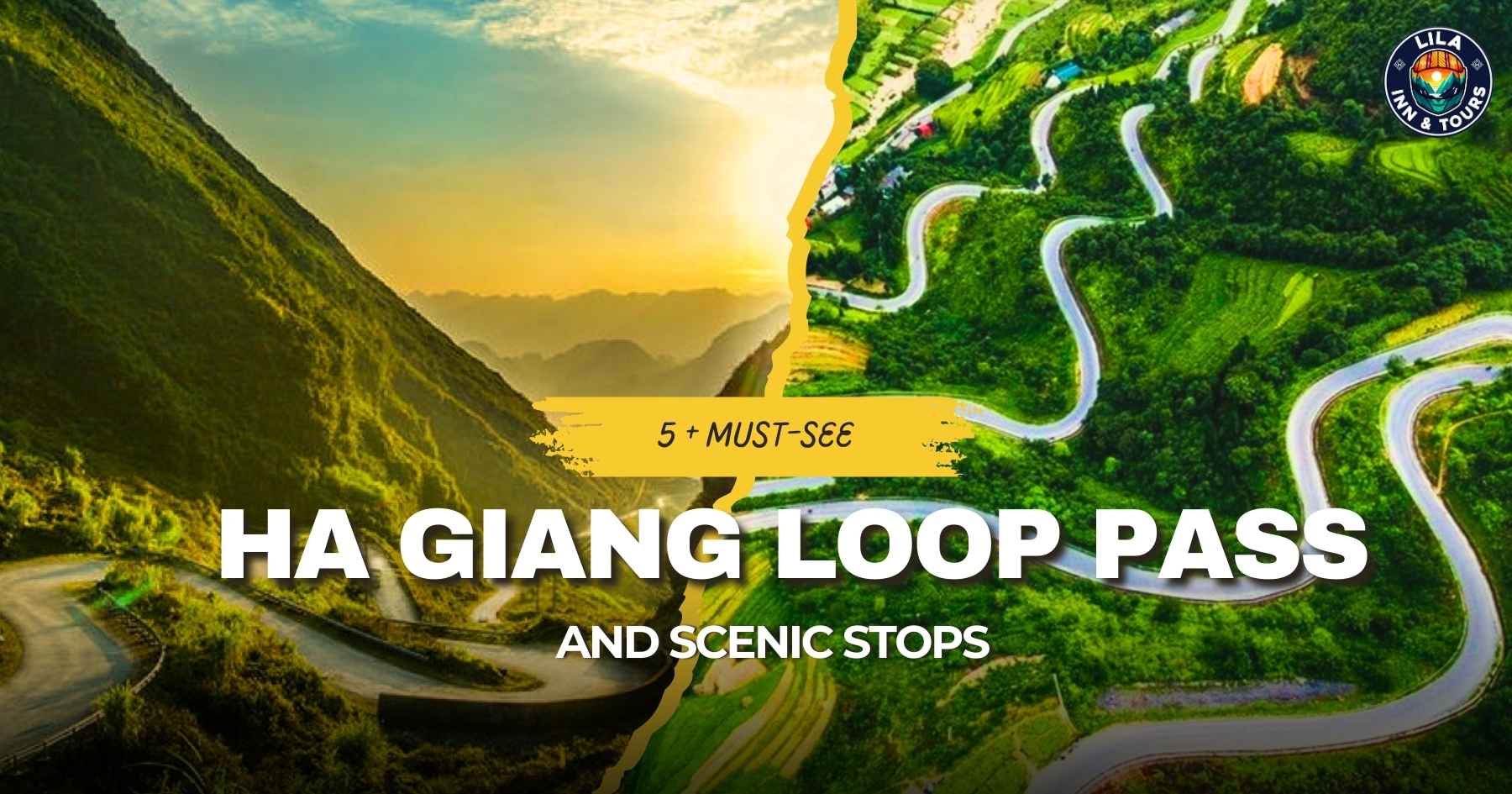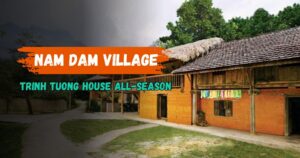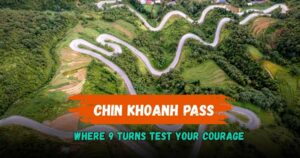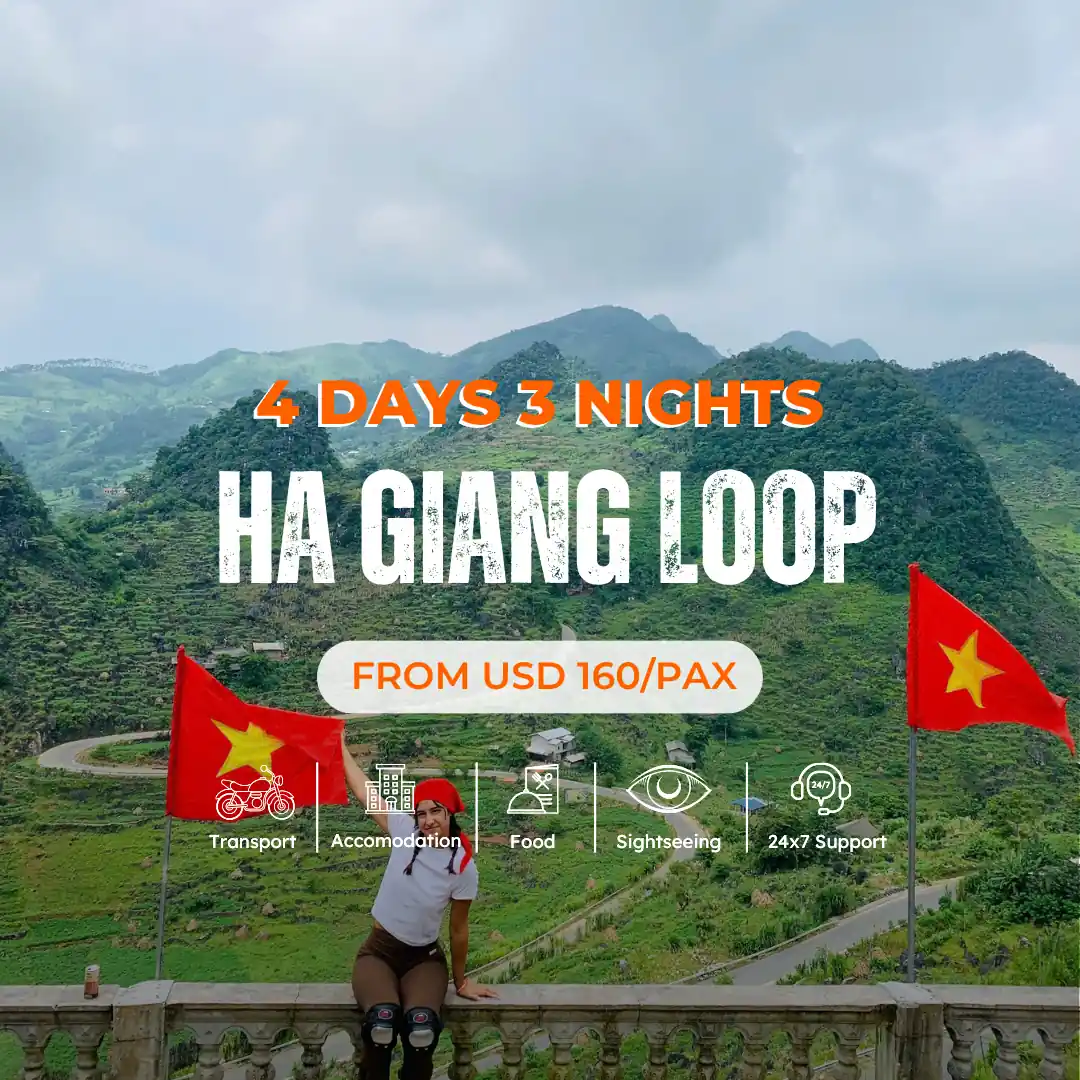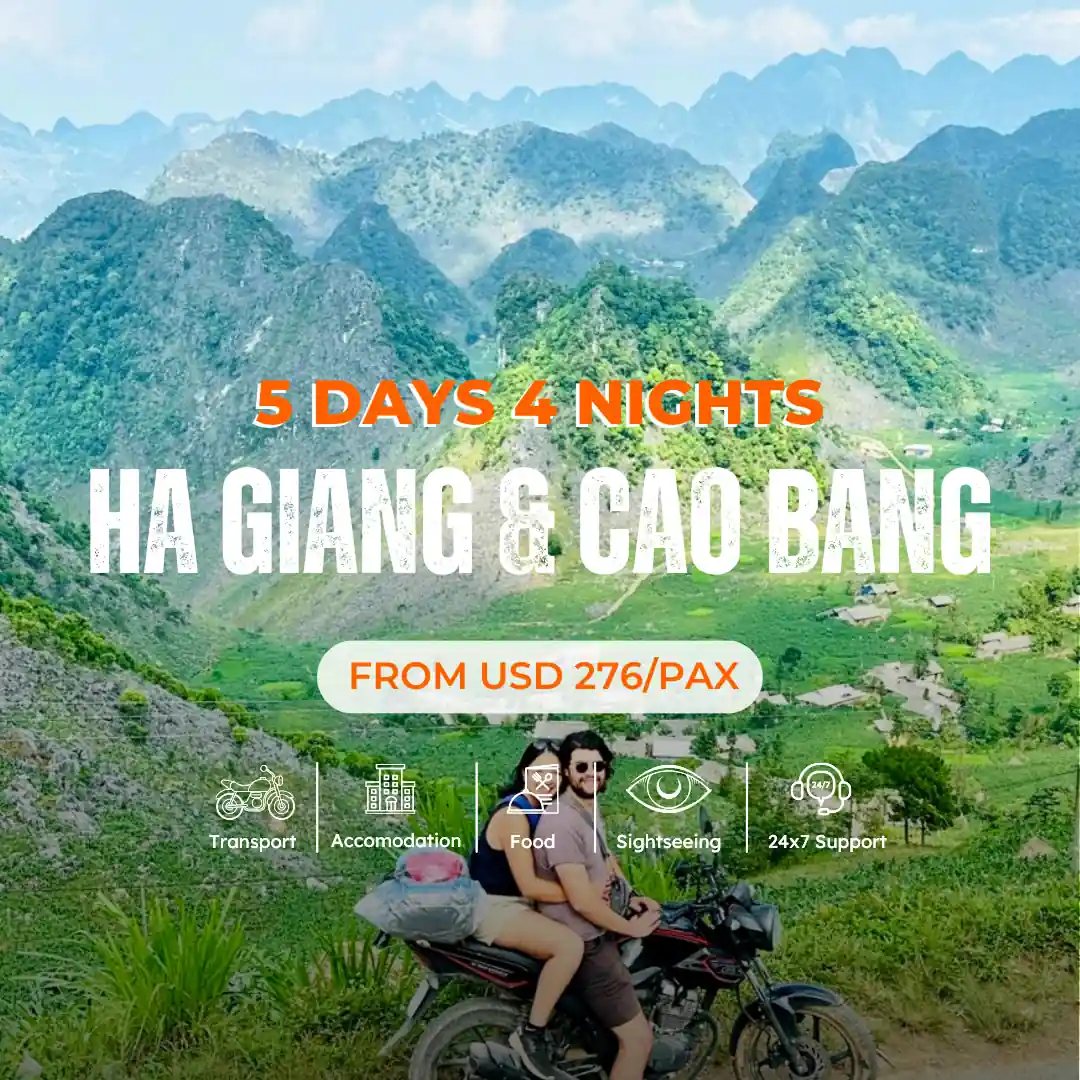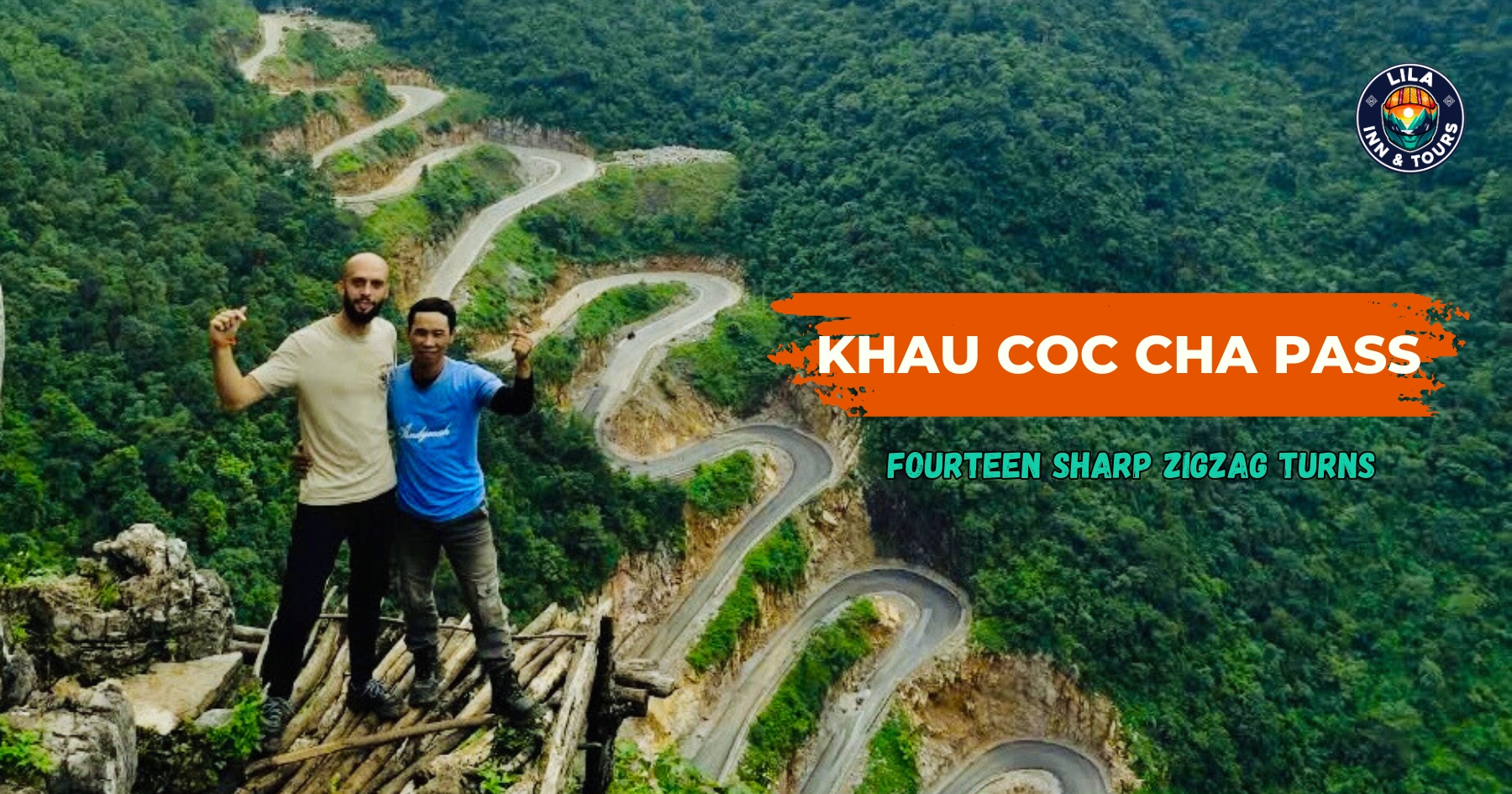Ha Giang Loop Pass is one of the most impressive highlights of the Ha Giang Loop with its winding, steep, but fascinating mountain passes.
Each twist and turn thrills adventurous travelers with “million-dollar” views of valleys, towering peaks, and quiet hill villages, while the shifting climates get higher, making the journey feel like riding into a “fairytale.”
As the son of this land, Lila Inn & Tour, with 8 years of experience guiding tours, will be your trusted Ha Giang Loop guide, taking you to the 5 most iconic passes: Ma Pi Leng Pass, Tham Ma Pass, Bac Sum Pass, Chin Khoanh Pass, and Du Gia Pass. These passes are considered the soul of the journey, and you should not miss any of them.
Here’s a Loop Ha Giang map showing all the passes mentioned in this guide, making it easy to plan your route and stops.
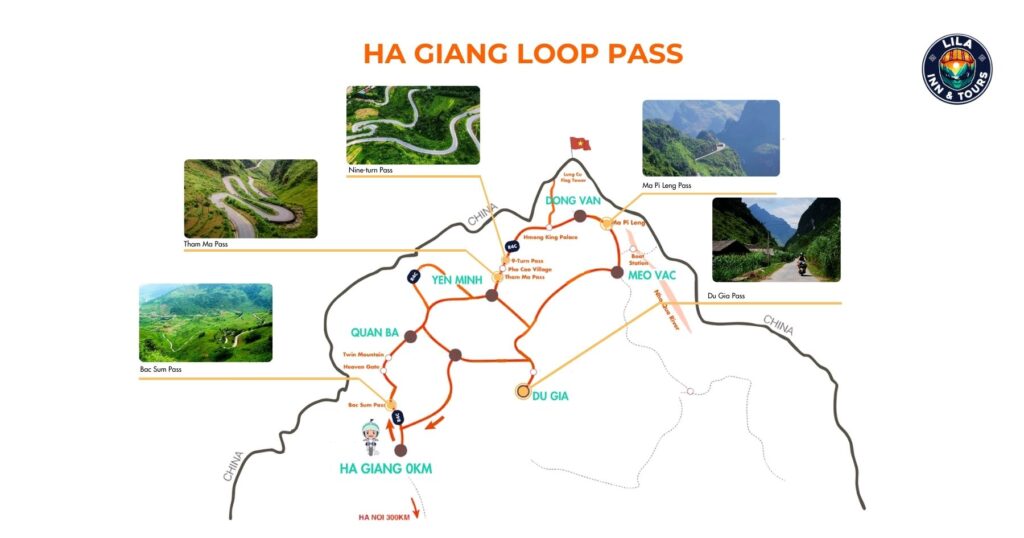
Ma Pi Leng Pass – One of Vietnam’s four greatest mountain passes
If you do the Ha Giang Loop, Ma Pi Leng Pass is the road you’ll remember forever.
This 20 km stretch connects Meo Vac and Dong Van, running along high limestone cliffs on one side and dropping straight down to the emerald Nho Que River on the other. The road twists and turns endlessly, climbing steep hills and diving into sharp curves, giving you both excitement and a little thrill.
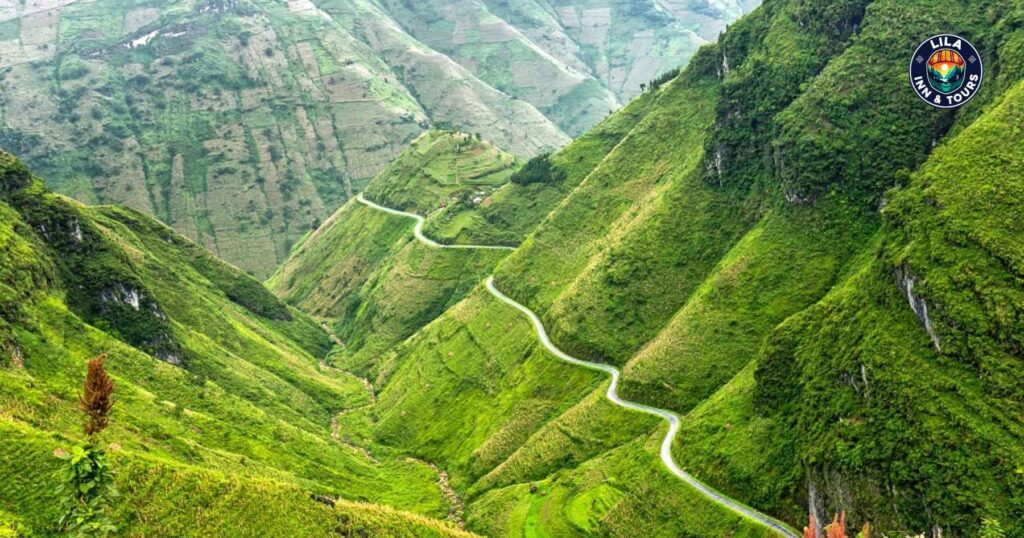
It’s one of the “Four Great Mountain Passes” in Northern Vietnam, reaching heights of 1,200 to 1,600 meters. But the most unforgettable thing is the view from the top: white rocky cliffs to the left, the deep Tu San Canyon to the right, and far below, the calm Nho Que River winding through the mountains. It’s so stunning it can make your heart skip a beat.
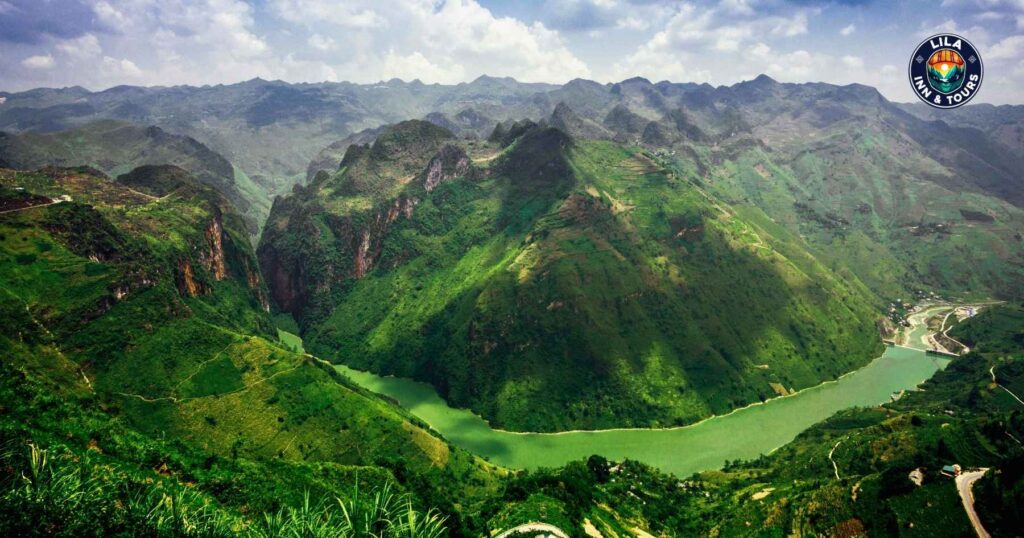
Built between 1963 and 1965 by thousands of young volunteers using only ropes and simple tools, this road is a symbol of courage and determination. Besides, its name, “Ma Pi Leng,” means “horse’s nose bridge” in the local language, describing the steep and sharp shape of the mountains here.
Today, Ma Pi Leng stands not only as a stunning mountain pass but also as a lasting reminder of the courage that made it possible.
Tham Ma Pass – A slope that once tested horses
Nestled along National Highway 4C in Yen Minh District, about 60 kilometers from Ha Giang City, Tham Ma Pass is one of the most iconic roads on the Ha Giang Loop.
Though only about 5 kilometers long, it still presents a decent challenge. Winding its way up to nearly 800 meters above sea level, the pass is a tight ribbon hugging the mountainside, with sharp hairpin turns that demand both skill and focus from riders.
The difficulty of this road is reflected in an old practice of the local H’Mong people, who once used this to test the endurance of their horses. A horse that could reach the top without collapsing while carrying goods was considered strong enough to work in the mountains. That’s why the pass was called “Tham Ma”, which means “testing horses”.

Today, Tham Ma is not only a challenge for drivers but also a wonderful spot to pause and take in the view. From the top, you’re treated to a breathtaking panorama of soaring mountains. This landscape feels both wild and poetic. You might also come across local children carrying baskets of rapeseed flowers on their backs, bright smiles lighting up their faces.
Don’t hesitate to stop, share a laugh, and capture a photo with them. It’ll be one of the most heartwarming memories you take away from this mountain pass.

Bac Sum Pass – The majestic road leading to Heaven’s Gate
Located on National Highway 4C, connecting Ha Giang City with Quan Ba District, Bac Sum Pass is considered the first challenge for any adventurer embarking on the Ha Giang Loop.
The pass winds its way at an elevation of 450 meters. On old French maps, it was marked as “Pac Xum.” The name comes from the Tay or H’Mong language, meaning “a hundred caves and hollows”. This name perfectly describes the rugged terrain filled with countless cliffs and deep ravines on Bac Sum Pass.
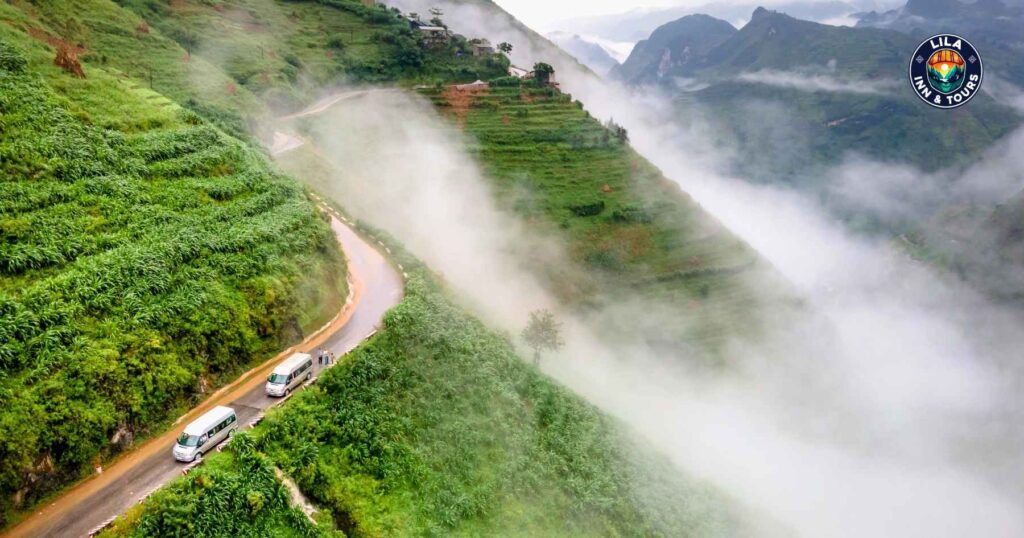
When conquering the pass, you may get surprised and a bit overwhelmed with its 8-kilometer continuous uphill climb, which is the longest among all the passes in Ha Giang.
The pass also offers the spectacular mountain scenery of Ha Giang, where white clouds float across jagged limestone peaks and layers of forested hills roll into the distance. From here, the road continues to guide you toward iconic landmarks like Quan Ba Heaven’s Gate, the Twin Fairy Mountains, and the awe-inspiring Dong Van Karst Plateau, which are unmissable highlights of the Ha Giang Loop journey.
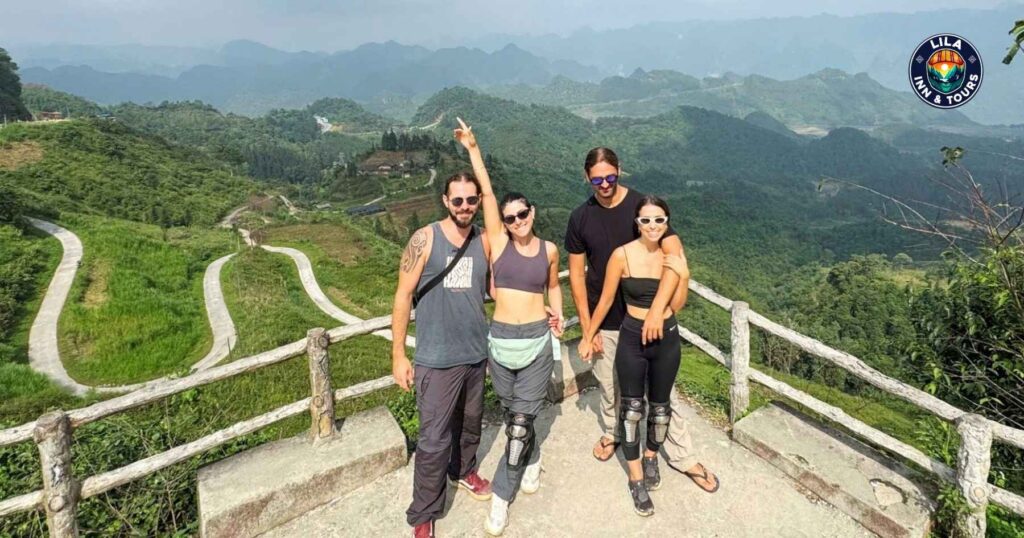
Besides its daunting steepness and stunning mountain view, Bac Sum also holds historical significance. During the resistance war against the French, this pass served as a vital communication route for Vietnamese soldiers.
Chin Khoanh Pass – Ha Giang’s Sharpest Curves
Chin Khoanh Pass (or Nine-turn pass) is a 2-kilometer slope connecting the communes of Sung La and Pho Cao.
As its name suggests, the pass features nine consecutive sharp turns, cutting through rocky hillsides. Climbing to over 1,400 meters above sea level, this slope is so relentlessly steep that not every motorbike has the power to conquer it. Some riders even have to get off and push their bikes.
However, what makes the Nine-turn Pass journey more worthwhile is the scenery along the way. When you pause at the top of the pass and look down, you will see Pho Cao Valley, which is one of the most beautiful valleys on the Ha Giang Loop.
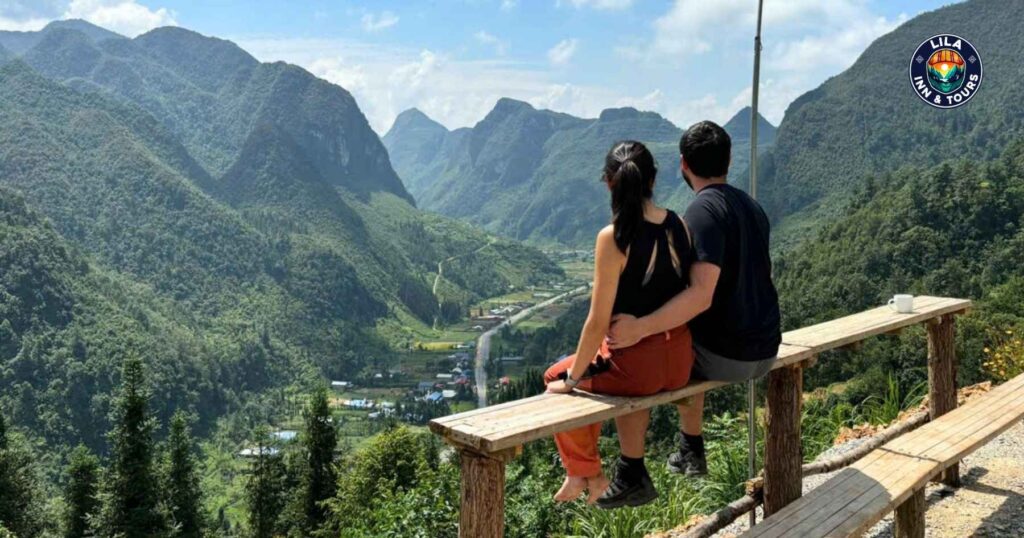
Another charming highlight is that during the blooming season, fields of buckwheat flowers blanket both sides of the road. It creates a breathtaking scene that makes you feel as if you’ve stepped into a fairytale.
From Nine-turn Pass, the road leads deeper into the rugged beauty of the Dong Van Karst Plateau, offering a glimpse of the region’s unique highland charm.
The pass also comes with a well-known local tale: couples who successfully ride through all nine bends together are believed to enjoy a strong and lasting relationship, and that’s why many have chosen this dramatic setting for their wedding photos.
Du Gia Pass – A Peaceful Green Road Through the Mountains of Yen Minh
Du Gia Pass is a scenic mountain road leading from the lush Lung Ho Valley to Du Gia commune in Ha Giang.
Unlike the sharp, rocky passes of the Dong Van Plateau, the route winds through breathtaking stretches of golden rice terraces, which are layered one after another along the hillsides. At the end of the pass is Du Gia commune. It is home to nine ethnic groups with a peaceful charm. You’ll see stilt houses, small ponds, and rice fields tucked gently into the valley.
If you have time, stop for a bit to explore the villages or join the traditional love market, a special local gathering of locals here.
Though not too difficult to ride, Du Gia Pass still has a few sharp turns that require focus and steady control.


After the iconic passes, dive into the hidden gem beauty of each Ha Giang Loop waterfall
Tips for riding Ha Giang’s Passes Safely
As you’ve probably realized by now, Ha Giang’s mountain passes are not only breathtaking but also full of twists, turns, and surprises. To truly enjoy the ride while staying safe, it’s important to come prepared. Choosing trusted operators offering some of the best Ha Giang Loop tours will also make your journey smoother and more enjoyable.
After 8 years of guiding Ha Giang Loop tours, here are the top safety tips we believe will be most helpful for self-driving:
- Learn about the terrain in advance: Ha Giang roads can be narrow, steep, and full of sharp bends. Knowing what to expect helps you ride with more confidence.
- Know the best time to do Ha Giang Loop: Weather dramatically affects road safety. The right season gives you clearer views, better road conditions, and a more enjoyable ride overall.
- Listen to locals and experienced riders: Locals and seasoned Loop riders know which areas are tricky, what to avoid, and when to take breaks. Their advice is gold.
- Avoid riding at night: Poor visibility, unexpected road hazards, and limited lighting make night riding very risky, especially in the mountains.
- Check your motorbike thoroughly (if riding yourself): Make sure your brakes, tires, lights, and horn are in good shape before setting off. A reliable bike makes all the difference.
- Take it slow: Speeding is never worth it. Ride at a pace where you can enjoy the view and react to anything unexpected.
- Watch the weather: Rain and fog can make the road slippery and reduce visibility. Check the forecast and adjust your plans if needed.
- Pay attention to road signs: Signs often warn about sharp turns, landslides, or steep descents. Don’t ignore them, they’re there for your safety.
However, if you join a guided tour, all of the above precautions will be taken care of by our team. All you need to prepare is a worry-free mind to enjoy the trip
How to explore the Ha Giang Loop Passes?
There are two main ways to experience the incredible mountain passes of the Ha Giang Loop: self-driving or joining a guided tour. Each option offers its kind of adventure, depending on your style, riding skills, and how much freedom or support you’d like.
1. Joining a guided tour
-
Easy Rider: An easy rider Ha Giang Loop experience means riding with an experienced local motorbike driver who takes you as a passenger. This option lets you enjoy the scenery and cultural experiences without worrying about the challenging roads.
-
Ride yourself and join the group tour (An International Driving Permit – IDP is required): Want to ride your own bike but still follow a local guide? This is a great in-between option that combines independence with on-the-road support.
-
Car Tour: Prefer comfort and safety, especially during bad weather? A Ha Giang Loop car tour is ideal for families, couples, or groups looking for a more relaxed yet scenic journey.
2. Motorbike rental
A solo trip allows you to have the freedom to fully customize your itinerary, stop wherever you want, and truly take the Loop at your own pace.
However, with over 8 years of experience accompanying more than 24,000 travelers, Lila recommends choosing the Easy Rider as a safer and more worry-free option for exploring the Ha Giang Loop passes.
The route’s sharp hairpin turns and steep gradients can be dangerous, requiring not only excellent riding skills but also a deep familiarity with mountain roads. At Lila, our professional drivers, each with over 5 years of experience navigating the mountain roads, will take care of everything: safety, food, and accommodation, so you can just focus on enjoying the journey.
If you still prefer to self-drive, we also offer motorbike rentals, along with useful tips and route suggestions. Plus, we provide support services for self-driving whenever you need emergency roadside help.
Get your Free Ha Giang Loop Guide Plan your dream trip with our Free guide, including suggested itineraries, top attractions, safety tips, and local insights from Lila Inn & Tours By subscribing you agree to receive marketing communications from us. To opt out, click unsubscribe at the bottom of our emails.
Conclusion
All those feelings, all those views, can only be truly felt when you cross Ha Giang’s legendary passes with your own eyes and your own heart. And whether you’re planning a Ha Giang Loop Tour 3 days, looking for a slower Ha Giang Loop 4 day itinerary, or dreaming of combining the mountains with waterfalls on the Ha Giang and Cao Bang Loop, Lila is here to guide you with honesty, care, and the spirit of a true local.
Reach out to Lila. Let us take you on the road we’ve called home for generations.
FAQs
- Is it safe to travel through Ha Giang passes in the rainy season?
Traveling through Ha Giang passes during the rainy season (May to September) can be hazardous due to slippery roads, mudslides, and reduced visibility from fog or heavy rain. Only experienced riders should attempt it, ideally with a local guide or an Easy Rider for safety. Proper rain gear and cautious driving are essential.
- Which pass is the most challenging on the Ha Giang Loop?
Ma Pi Leng Pass is widely considered the most challenging due to its steep cliffs, sharp curves, and high altitude of around 1,200 meters. The narrow roads and dramatic drops demand advanced riding skills and extreme caution.
- How many passes are there on the Ha Giang Loop?
The Ha Giang Loop features approximately 10 mountain passes, each offering unique scenery and challenges. The four most iconic and demanding are Ma Pi Leng, Bac Sum, Tham Ma, and Nine Turn (Chin Khoanh), known for their steep inclines and winding routes.
- Can beginners ride the Ha Giang Loop passes?
The Ha Giang Loop is not recommended for beginner riders due to its rugged terrain, sharp curves, and unpredictable weather. Novices should opt for an Easy Rider (a guided motorbike tour with an experienced driver) to navigate the passes safely while enjoying the stunning views.
- Do I need a license to ride through the Ha Giang Loop Pass?
Yes, foreigners need an International Driving Permit (IDP) to legally ride motorbikes in Vietnam, including the Ha Giang Loop. Ensure your IDP covers motorbikes (category A) and carry your original license, as police checks are common in the region.


